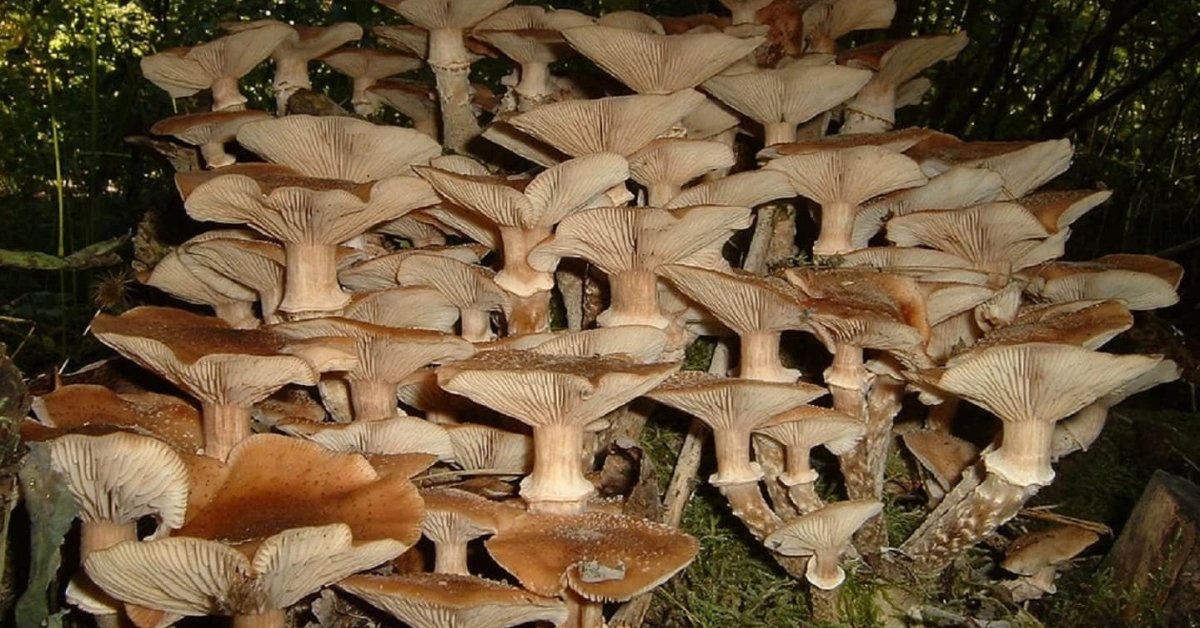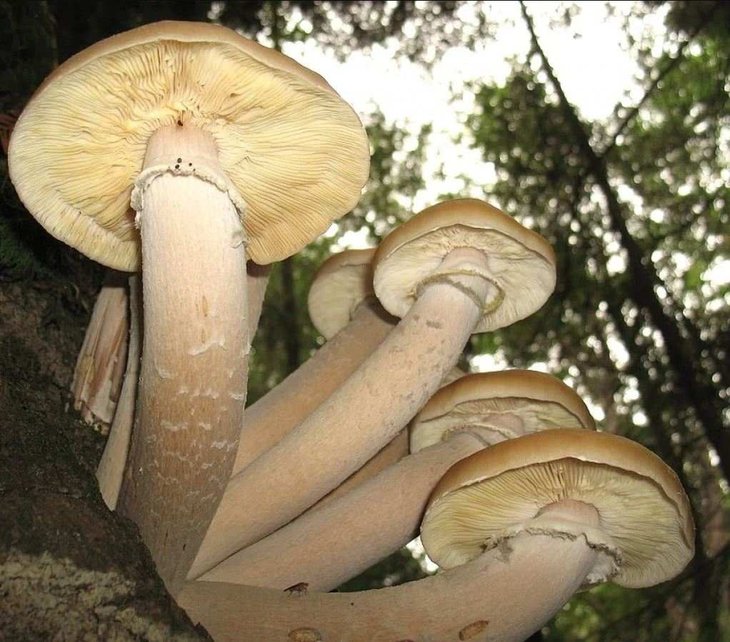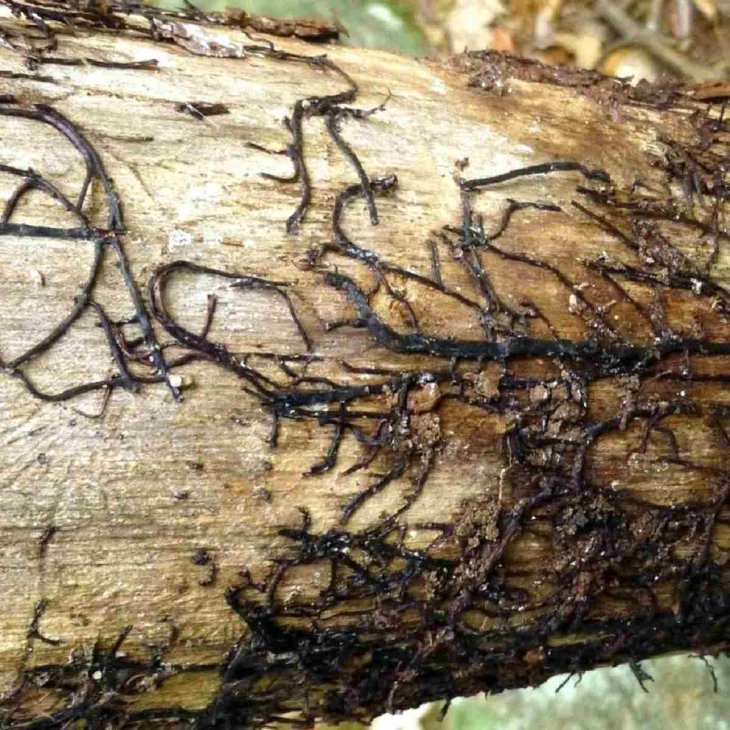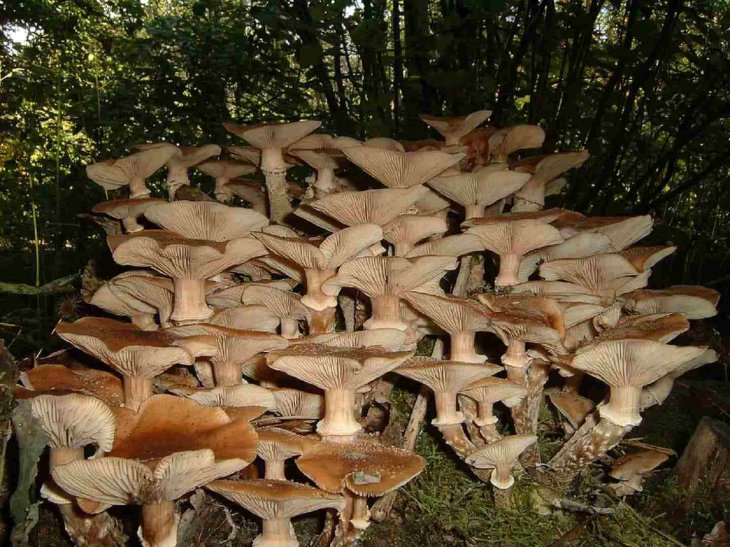The Largest Living Creature Is A Fungus As Heavy As 1500 Elephants
Dhir Acharya - May 18, 2020

You may think the elephant or the blue whale is the largest living organism on Earth, but the answer will shock you. It's much much bigger.
- Scientists Want To Send 6.7 Million Samples, Including Sperm, To The Moon
- This 99-Million-Year-Old Fossil Unlocks A Entirely New World To Study
- How Do We Know The Universe Is 13.8 Billion Years Old?
Since we were little kids, we have always thought the dinosaur is the largest creature on Earth, but they are extinct. And though you may think the blue whale is the largest living creature in the world, it’s not true either. The largest living organism on the planet, in fact, is a fungus existing around us but hardly noticed.
Scientifically named Armillaria ostoyae, the gargantuan fungus covers over 8.8 square kilometers of the Malheur National Forest in the US. More impressively, it weighs about 600 tons and is believed to have existed for between 2500 and 8500 years.

For the most part of the year, it lives as rhizomorph, or a network of interjoined fungus filaments underground. But in the fall, it will rise above the ground as edible honey mushrooms, showing its impressive massive territory.
Since the entire structure grows by only 1 meter each year, its expansion over time is even more impressive. But how can it grow to cover such a large area?
BY KILLING HOST TREES
For the past thousands of years, the largest living organism has been slowly infecting, killing, eating, and engulfing countless trees and bushes that block its path. As an infamous killer of the forest, the fungus’ rhizomorphs act as highways for white rot to travel between hosts. To infect trees and shrubs, the white rot encircles, attacks, and kills their roots while rhizomorphs continue its path and seek the next host.

Many parasites require a living host but the largest living organism in the world can live off it hosts for a long time after it kills them. By not requiring a living host, the Armillaria ostoyae can achieve limitless expansion without needing self-regulation like other parasites that rely on living hosts. The attacked host dies after months or years.
One can track the progress of this fungus by following the expansion of dead and dying shrubs and trees. In the fall, it’s easy to detect infected as well as newly dead trees as they sprout honey mushrooms.
BY SNEAKING UP HOSTS AND GETTING RID OF COMPETITORS

Biologists compared the largest living organism’s genome with other related fungus species. They found that the fungus has evolved its devious genetic ways to infect trees.
For instance, trees have chemical markers alerting them of the fungus’ presence, but the fungus can reabsorb it. Therefore, trees are not alerted and the fungus can sneak up without being noticed. The rhizomorphs have also developed proteins to kill cells and eat the cellulose glue holding plant cell walls together.
If another competitor parasite arrives at the host the Armillaria is living off, it will produce a toxic chemical environment to make them run away.
Whew, this is not just the largest living organism, but probably also the scariest.
>>> Wearing This T-Shirt And You Are "Invisible" To Every Facial Recognition Camera
Featured Stories

Review - 8 hours ago
Top 5 Budget Cameras For Beginners (2025)

Features - Feb 26, 2025
Elon Musk Eyes Indian Market: Tesla’s Next Big Move?

Features - Aug 03, 2023
The Impact of Social Media on Online Sports Betting

Features - Jul 10, 2023
5 Most Richest Esports Players of All Time

Features - Jun 07, 2023
Is it safe to use a debit card for online gambling?

Features - May 20, 2023
Everything You Need to Know About the Wisconsin Car Bill of Sale

Features - Apr 27, 2023
How to Take Advantage of Guarantee Cashback in Online Bets

Features - Mar 08, 2023
White Label Solutions for Forex

Review - Jul 15, 2022
WHY BETTING SIGNUP OFFERS ARE IMPORTANT FOR NEW GAMBLERS

Mobile - Jul 01, 2022
The Best Sports Video Games to Play in 2022
Read more

Review- 8 hours ago
Top 5 Budget Cameras For Beginners (2025)
These are our top calls based on price and functions.

Gadgets- Apr 02, 2025
Steam Deck VS ROG Ally, Which is the Better Handheld PC?
For the price, you really can’t beat the Steam Deck. But to get the top graphics, you need to buy the ROG ally.

Mobile- Apr 01, 2025
How to Fake GPS Location on iPhone or Android
If you’re looking for the best fake GPS app for Android or a reliable fake GPS for iPhone, MagFone Location Changer is a top choice. It provides one-click location spoofing, route simulation, and works seamlessly with popular apps.

Review- 7 hours ago
GameZone: The Ultimate Platform to Play Tongits Online
This review will explore what makes GameZone the best place to play Tongits online, diving into its standout features, user-friendly design, and the overall experience it provides to players.
0 Comments
Sort by Newest | Popular